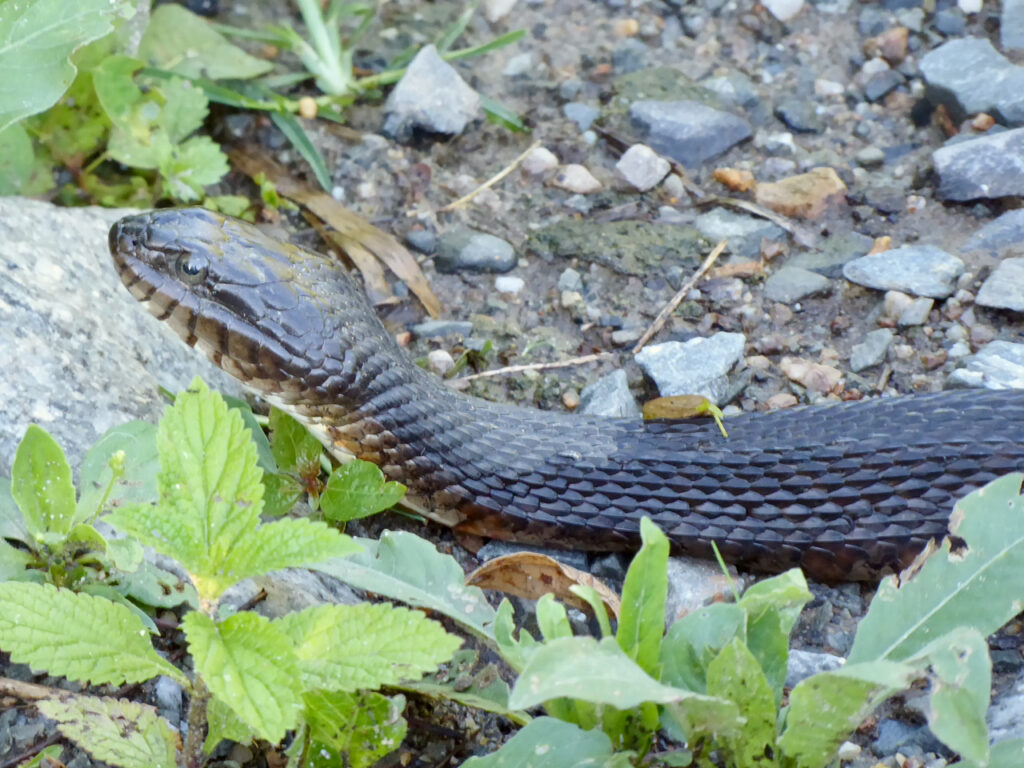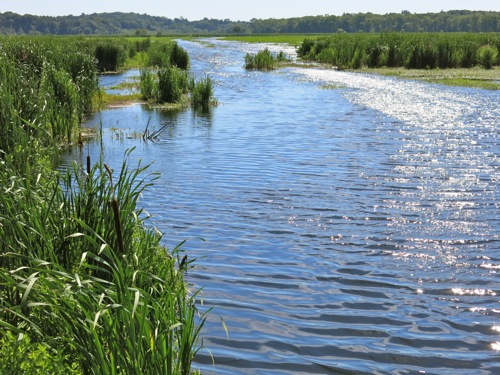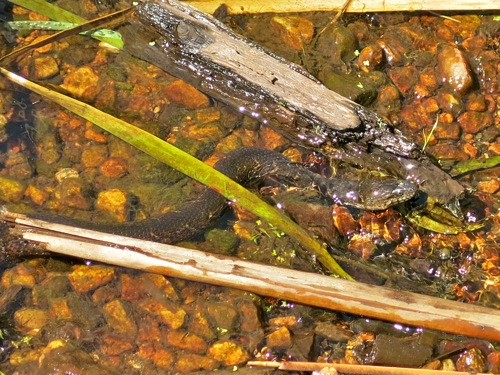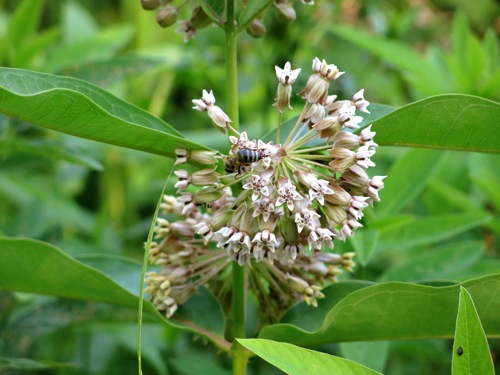Carol and I went for walks in two wildlife sanctuaries today: the Daniel Webster Wildlife Sanctuary and the North River Wildlife Sanctuary, both in Marshfield, Mass. Usually when we walk in wildlife sanctuaries I spend most of my time looking at plants, especially flowering plants. But today, without trying at all, we wound up seeing a quite a few animals. Here are three of them:

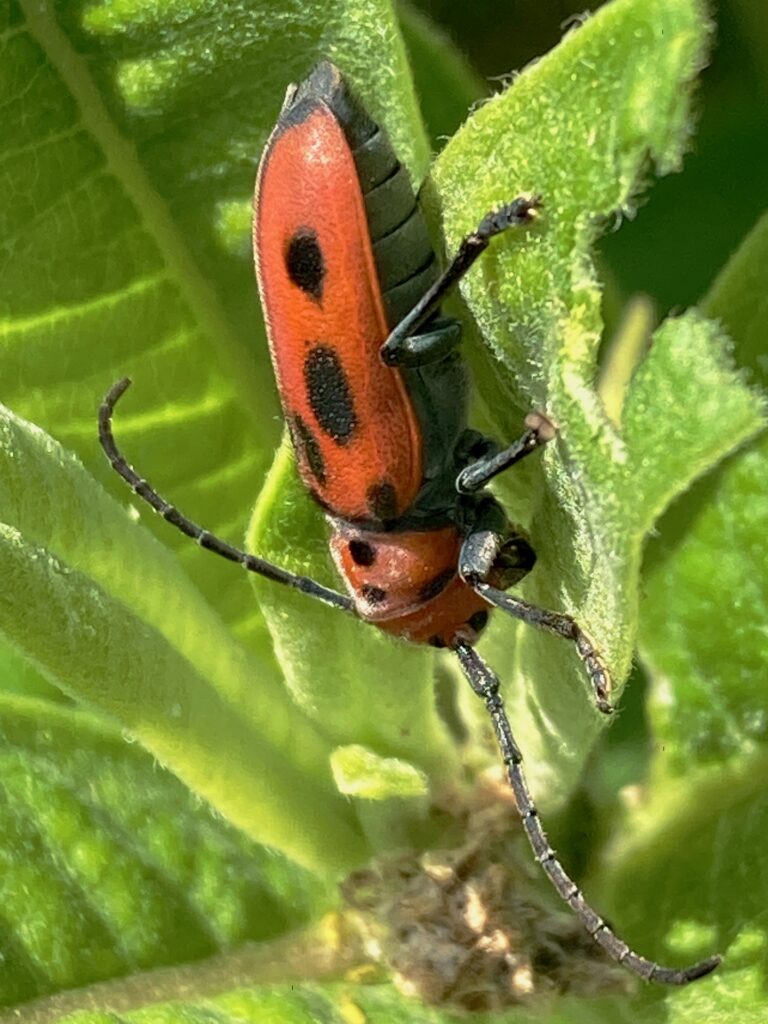
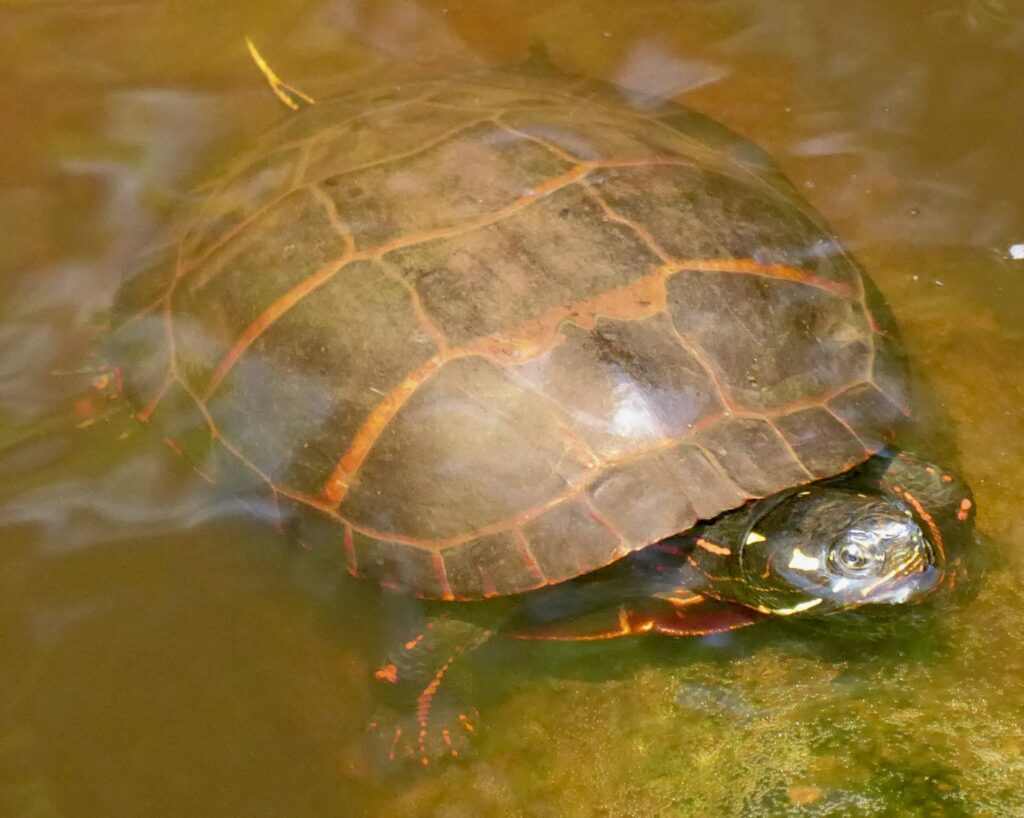
Each of these three animals is what I’d call charismatic. I’m not quite sure what makes some animals more charismatic than others. Animal charisma is not a matter of being cuddly — none of these three animals could be considered cuddly. Nor is animal charisma a matter of being cute — a baby Osprey might be cute, in a fierce flesh-tearing-beak sort of way, but a Red Milkweed Beetle is not what most people would consider cute. In fact, being cute and cuddly is almost the opposite of being charismatic. Cuteness and cuddliness feel controllable; charisma does not.
Humans remain my favorite animal. At the same time, I think it’s good for us humans to encounter non-human animals. After all, for most of human existence, we lived in close-knit human communities while being surrounded by non-human animals — a distinct contrast to our current existence, where we are alienated both from other humans, and from non-human organisms.

